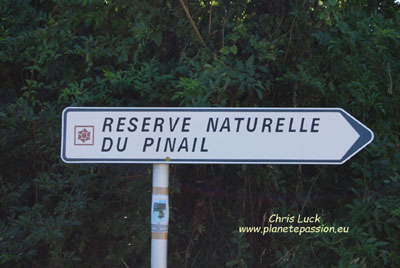
Pinail Nature Reserve - La Réserve Naturelle du Pinail
Human activity has always changed the environment and in this article I took a look at an extraordinary area that since 1980 has been the first and only State Nature Reserve in the Vienne departement of France, La Réserve Naturelle du Pinail which is located in the commune of Vouneuil-sur-Vienne, (86210). The Reserve is 30 km north-east from Poitiers and 15 km south from Chatellerault where it sits high on the plains between the river valleys of the Vienne and the Clain, at the north of the state owned Moulière forest.
As life returned to the land following the last ice age the Poitou region became covered in Oak and Beech forests interspersed with grassland and open moors that resulted from natural fires and the activities of large herbivores. This landscape remained largely unchanged for thousands of years with only small localised human populations until the Romans arrived. The Romans brought great changes and slowly society developed with housing, agriculture and food production not surprisingly at the forefront. It is thought that the Romans were the first to have started a milling industry using animals or teams of slaves to drive the wheels to grind the wheat although grinding grains and roots had been practiced by hand long before their time. By the end of the first millennium the development of mills required the extraction of millstones, (“pierre meulière”), hence the name la Forêt de Moulière. Millstone wheels started to be used throughout the kingdom and it is widely thought that this is the largest known millstone quarry in the world with its easy access to the Vienne river for transportation by boat.
The different usage rights, including the removal of millstones originates from the Royal Order of 1692, which aimed to restore degraded forests throughout the kingdom to provide wood for the maritime industry, (principally to combat the growth of the British fleet). The Pinail had long been used by local residents, especially for cattle grazing and regularly included burning areas in spring to regenerate the moor. Uses for the heather included animal bedding, use as a fuel and the construction of agricultural shelters and huts. Cattle were last grazed there during the Second World War.
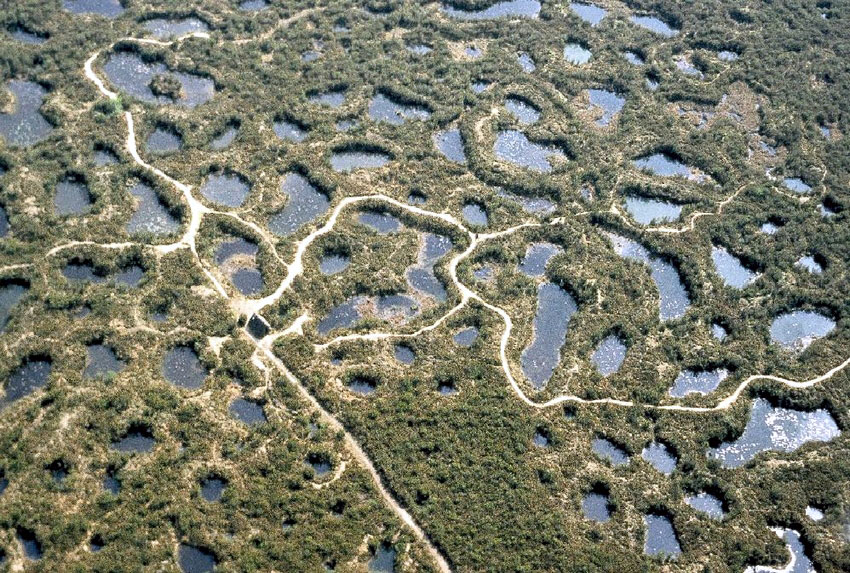
Aerial view of part of the reserve.
Created in the sector of Pinail named “Moulières neuves” the Reserve occupies 135 ha and encloses three thousand ponds that are the result of the millstone extraction which gives such a lunar look to this landscape steeped in history. The adjacent forest planted during the 1970's, 80's and 90's contained perhaps another 10,000 extractions ponds. The site itself has footpaths that are easy to walk when dry, not so easy following heavy rainfall so be warned.

Meandering paths wind through the reserve.

A view across the plateau with the forest in the far distance.
Other than the ponds and pools the other outstanding major feature is a heather Erica scoparia that dominates and provides the backdrop for the site. This can reach 4 metres in height and grows in south western Europe principally confined to Spain Portugal and southern France. This creates a type of heath called "brande" in local dialect, a name that refers to fire which is an all too common occurrence with dry heathland! Rotational cutting and controlled burning are still used to manage the heath and the mature heather is still used to make fencing, brushes and other traditional handicrafts. The English name for this species of heather is “Besom Heath” taken from the old English word “Besom” for a broom or brush.
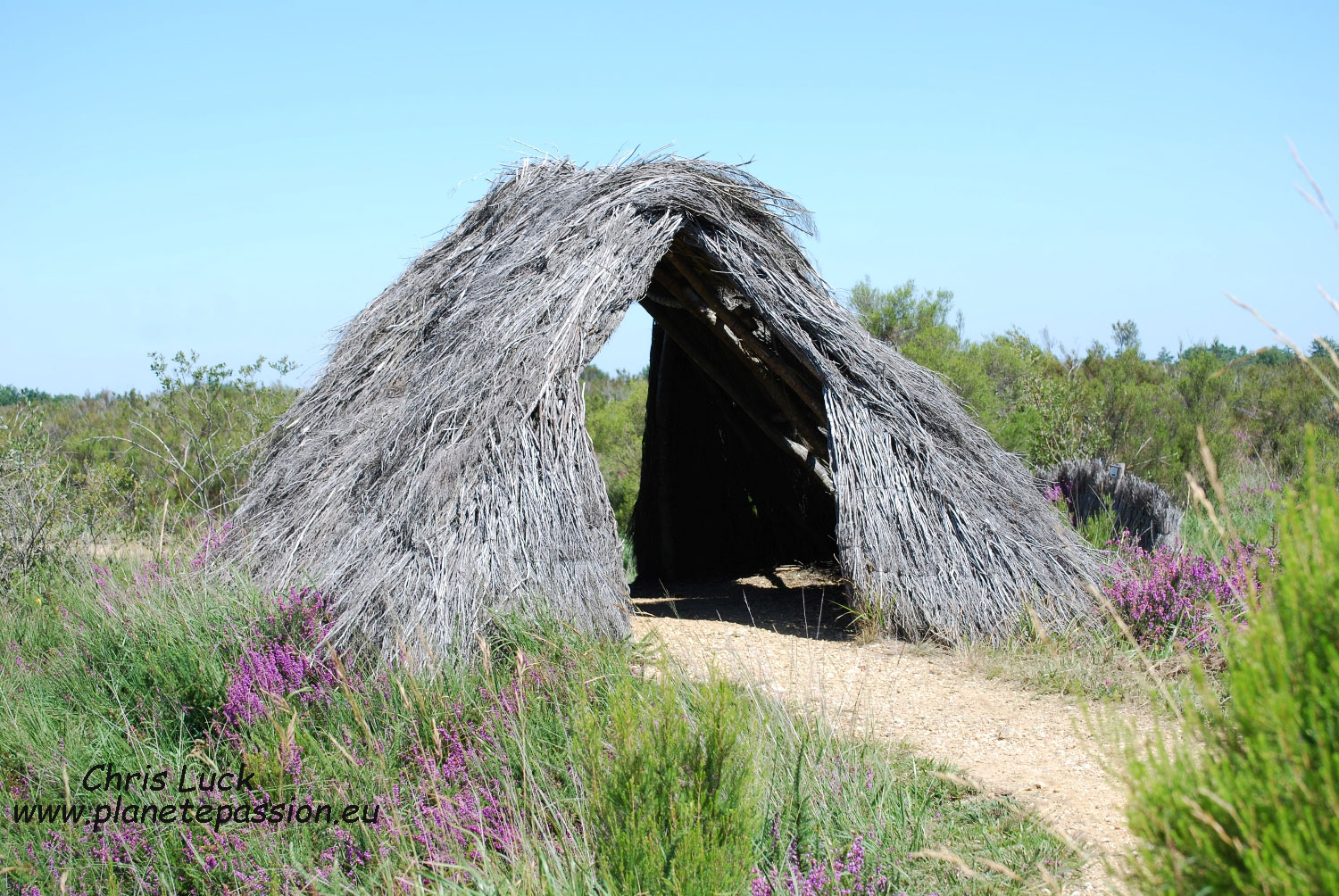
A heather shelter, now demolished, on a pathway.
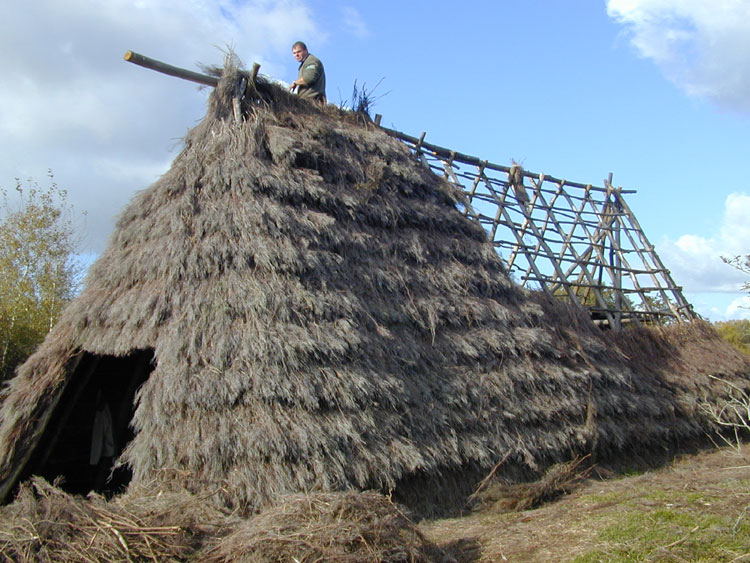
Constructing a shelter of the type used for sheep.
The site as whole supports some 450 plant species with some that are rare or endangered. The rarest, both in Vienne region and for Europe, is a little white orchid called the Summer Lady's tresses (Spiranthes aestivalis), which is fully protected in the EU. It rubs shoulders with the little Pillwort (Pilularia globulifera), a small fern with grass-like leaves colonizing pond and lake margins, ditches and wet open habitats. On the sunny side of a small seasonal stream, Le Rivau, Hedge Hyssop (Gratiola officinalis), grows in compact clumps in three places. The fourth national protected plant is a carnivorous one growing on Sphagnum moss peat - the carnivorous Round- leaved Sundew (Drosera rotundifolia), which traps small insects on adhesive drops radiating around its leaves.
Two other carnivorous plants that are easy to spot in the ponds of the reserve with their bright yellow flowers raised above the water, the bladderworts Utricularia minor and U. australis sucking up water fleas with small clamshell traps that are spread all over their submerged parts.
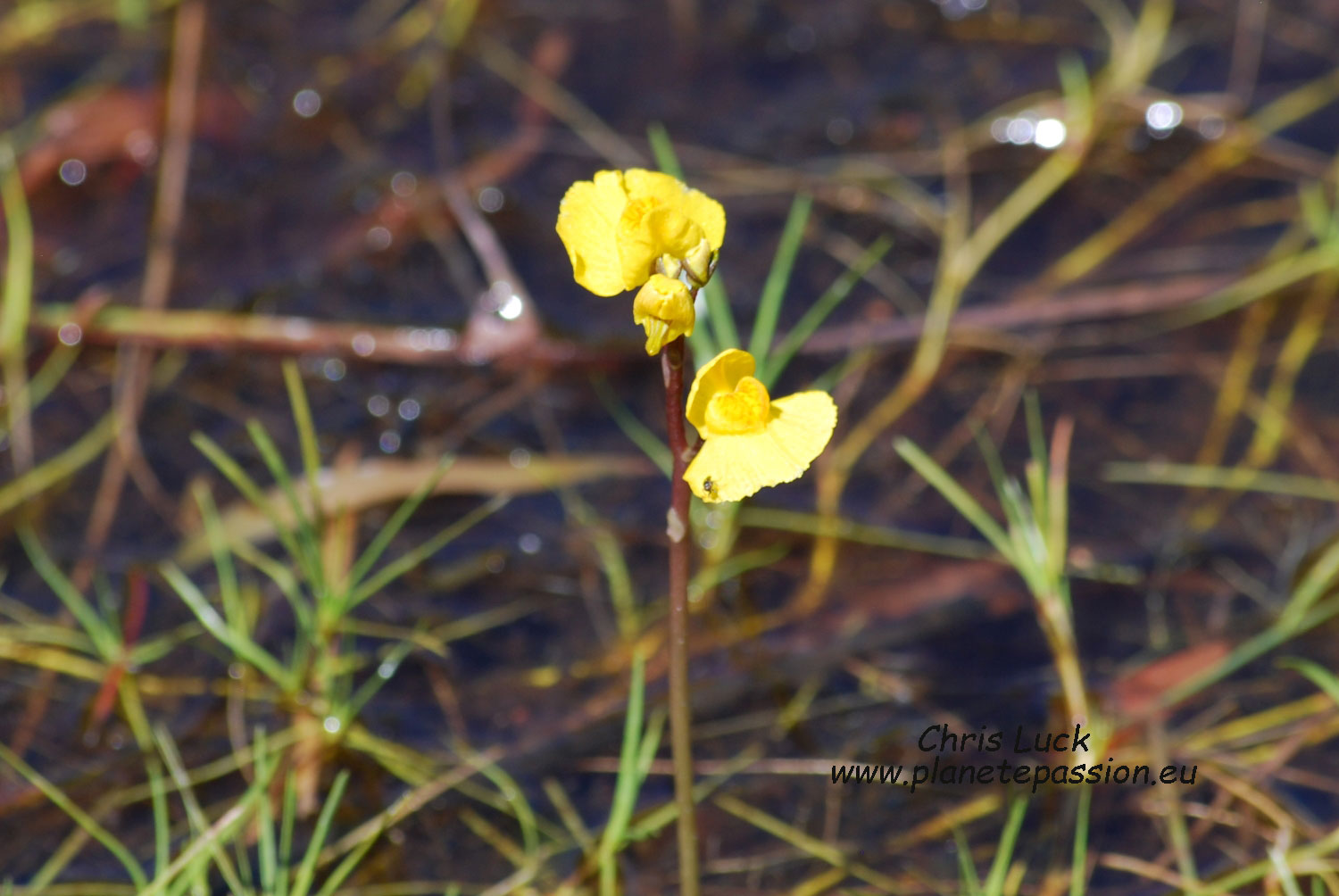
ABOVE: Utricularia australis
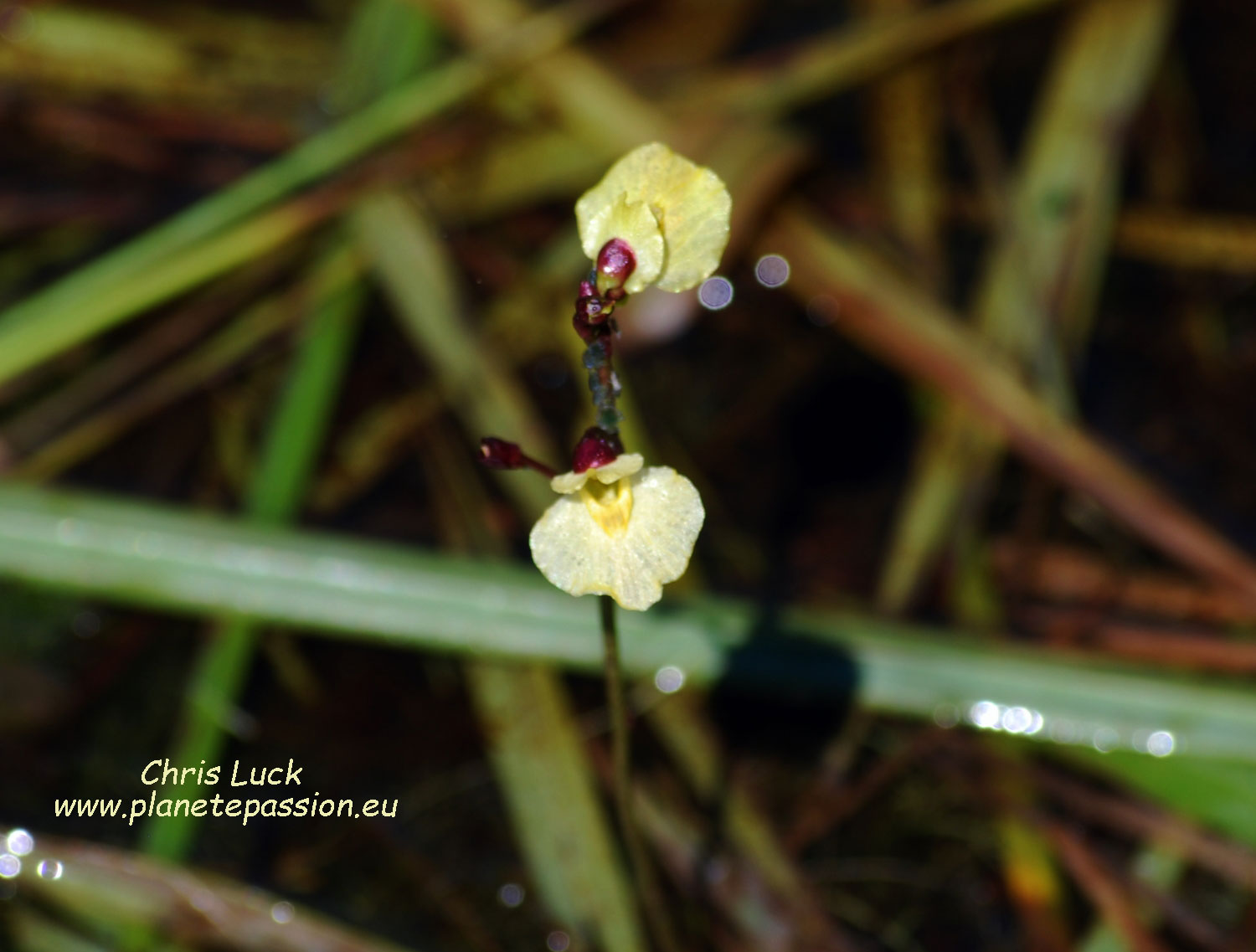
ABOVE: Utricularia minor
The migratory Grasshopper warbler and the sedentary
Dartford warbler both nest here on or close to the ground but can be
hard to spot. This can also be a good place in summer to see Short toed
eagles that nest near by hunting for snakes that they require in large
numbers and also in summer as dark falls Nightjars can be seen and heard
chirring as
they hunt for moths and beetles on the wing. Another little bird that
although not rare that can be seen in the Pine forest is the Crested
Tit. In the heat of high summer the sounds of the New forest cicada
(Cicadetta Montana) and the Migratory Locust (Locusta migratoria) can be
enjoyed throughout the open landscapes and of course the reserve with
all its pools is excellent for Dragonflies
The Reserve is managed by GEREPI (Natural Management Organization of the Pinail Reserve) which includes the structures involved on the site, grouped into five colleges: the National Forest Office; Trusts for protection, education and study of nature; local community councils; Scientists; other organisations and qualified persons.
An excellent book for those with a deeper interest in both the history and the wildlife is “Mouliére, la foret des pierres” by Michel Granger, LPO Vienne. ISBN 2-9521071-0-6


